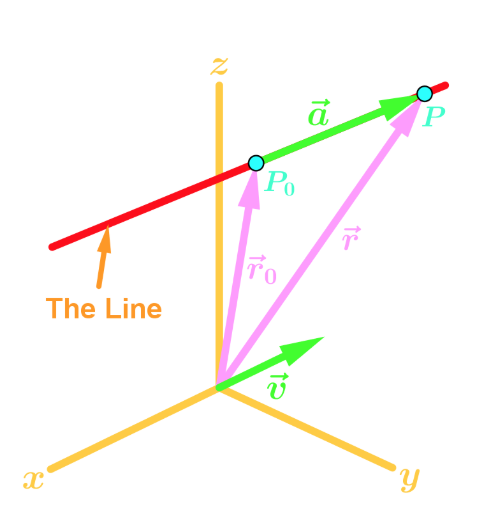Vector Equation for 3-Dimensional Lines
Unlike 2D lines which have the equation , 3-Dimensional lines can be expressed as vector functions in the form
where t is a variable. Here is the visual representation of the vector .

There are 2 other alternate ways to express a 3-Dimensional line.
Parametric Equation
From the equation above, we can rearrange the vector equation so that:
Symmetric Equations Assume that are non-zero. Then rearranging the set of equations from above gives us:






